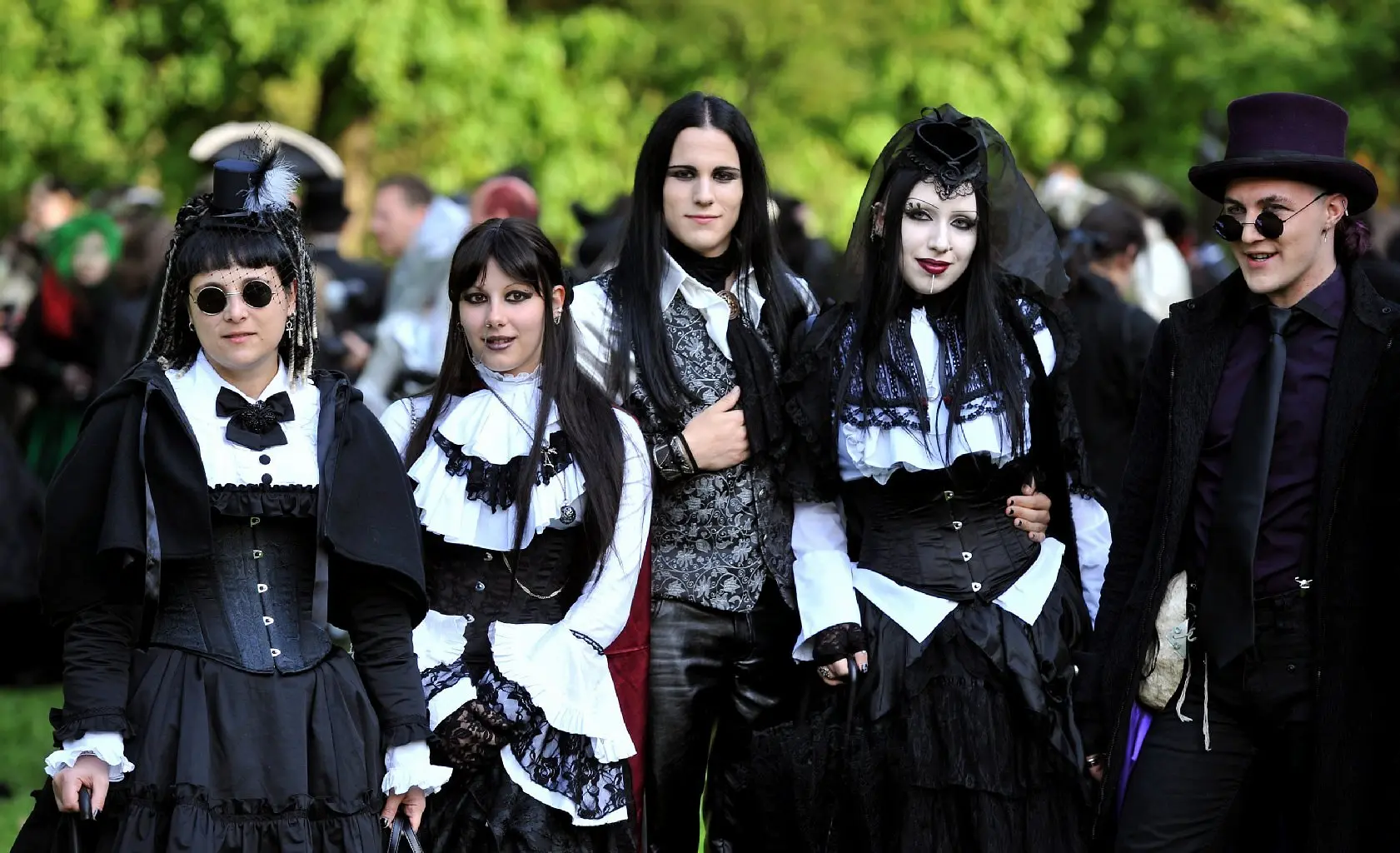Introduction: What is Goth SubCulture?
The goth subculture is one of the most enduring and fascinating movements in modern history. Emerging in the late 1970s from the post-punk scene in the UK, it quickly expanded across the globe, blending haunting gothic rock with literature, art, and fashion. More than a style, goth is a philosophy rooted in dark romanticism, mystery, and the beauty of melancholy. Its influence stretches from Victorian-inspired goth fashion to today’s TikTok and Instagram aesthetics, proving its adaptability across generations. For many, goth is not a fleeting trend but a lifelong identity—an expression of individuality and authenticity in a world that often fears the shadows.
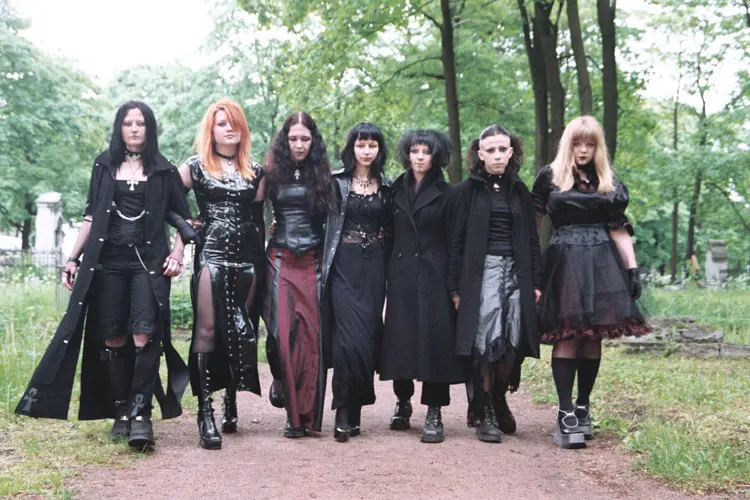
Picture someone discovering beauty in darkness where others see only shadows—that’s the essence of the goth subculture. Far from being about sadness or despair, the gothic lifestyle transforms the mysterious and the macabre into forms of artistic expression.
The goth culture has always been more than fashion trends or goth music. It represents a philosophical movement rooted in individualism, creativity, and dark romanticism. To be goth means appreciating the poetry of mortality, finding comfort in the goth aesthetic, and expressing your authentic self through alternative fashion, art, and identity.
This ultimate guide to the goth subculture will walk you through its origins, goth fashion styles, iconic goth bands, goth makeup, literature, lifestyle, and its cultural impact—offering everything you need to truly understand and embrace this timeless movement.
The Origins of the Goth Subculture
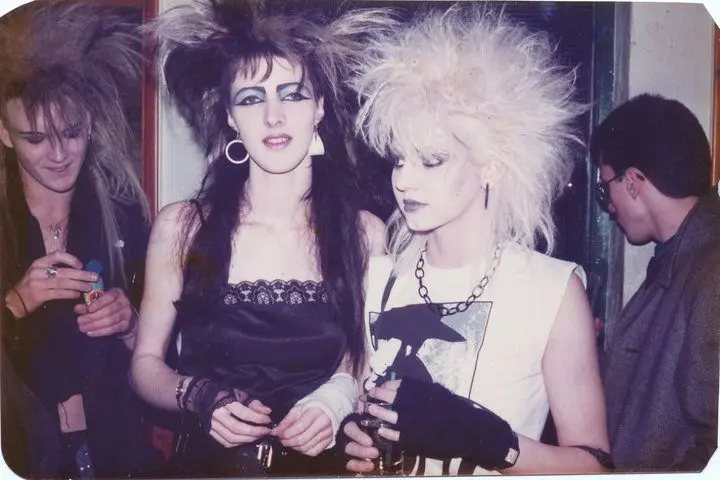
The goth subculture didn’t just materialize overnight. It emerged from the late 1970s, when the raw energy of punk began to morph into something darker and more atmospheric. Post-punk musicians such as Joy Division and early Siouxsie and the Banshees carved out haunting sounds that hinted at what was to come.
The transformation gained momentum when underground venues like The Batcave in London gave this movement a stage. Bands like Bauhaus, with their iconic track Bela Lugosi’s Dead, alongside The Cure and Sisters of Mercy, shaped the DNA of gothic rock. Their melancholic melodies and introspective lyrics resonated with outsiders seeking identity and belonging.
Yet the movement wasn’t fueled by music alone. American readers had long embraced the macabre tales of Edgar Allan Poe, while European gothic novels provided a literary backbone. Together, these influences fused sound and storytelling into a unique cultural identity.
Across decades, the subculture evolved. The 1980s goth scene built the classic look and club culture, the 90s added industrial and experimental twists, and the early 2000s found goth thriving on MySpace and niche forums. Today, TikTok and Instagram drive a new wave of the goth aesthetic, where younger fans remix tradition with modern creativity.
Core Philosophy and Meaning of Goth
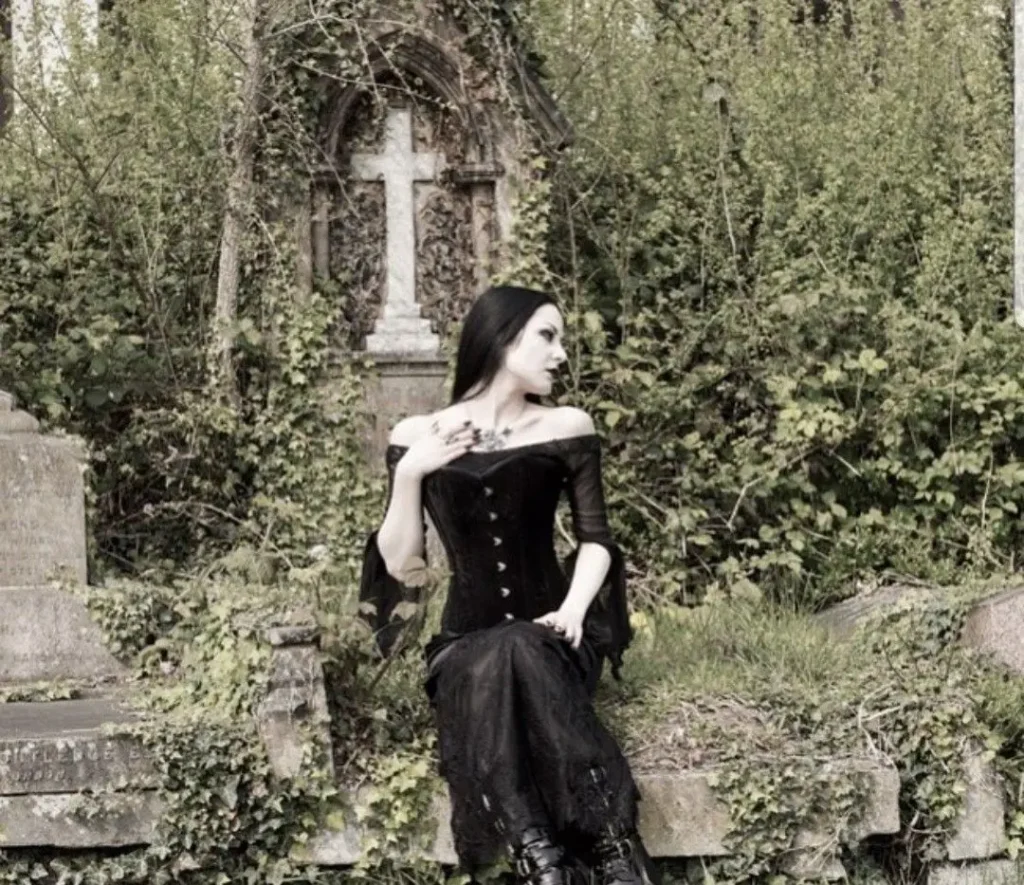
Dark romanticism forms the philosophical backbone of the goth subculture. It’s not about glorifying negativity—it’s about discovering beauty within the shadows and acknowledging emotions society often ignores. The gothic aesthetic embraces mystery, mortality, and the supernatural, weaving them into art, music, and lifestyle choices.
At its core, goth celebrates self-expression and the freedom to embrace individuality. Non-conformist thinking drives the community, where members reject the pressure to appear endlessly cheerful. Instead, they value honesty in emotion, channeling it through poetry, goth fashion styles, and haunting soundscapes. This makes the movement not gloomy, but profoundly creative.
Misconceptions linger. Outsiders often equate goth with satanism, depression, or despair. The reality is far different—it’s a culture built on inclusivity, acceptance, and artistic depth. In the USA, many adopted goth both as a form of rebellion against mainstream culture and as a liberating goth aesthetic that fuses creativity with authenticity.
Goth Music: The Heart of the Movement
If one element defines the goth subculture, it’s undeniably goth music. Emerging from the post-punk era of the late 1970s, the sound was pioneered by foundational bands like Bauhaus, The Cure, Siouxsie and the Banshees, and the Sisters of Mercy. Their haunting atmospheres, melancholic lyrics, and experimental rhythms gave rise to a genre that resonated deeply with outsiders seeking emotional depth.
As the movement evolved, new sub-genres emerged. Darkwave fused electronic melancholy with dreamy vocals, deathrock carried punk’s raw aggression into darker realms through bands like Christian Death, and industrial goth embraced mechanical intensity. At the same time, ethereal wave introduced spiritual, otherworldly textures. Even Depeche Mode contributed electronic influences that shaped synthwave and dream pop directions, proving how versatile the gothic sound could be.
Across the Atlantic, American contributions expanded the scene with underground clubs in Los Angeles and New York, helping cement the genre’s global identity. Earlier inspirations such as David Bowie and The Velvet Underground also left their fingerprints, influencing the theatricality and atmospheric compositions that remain central today.
In the digital age, modern revival artists keep the tradition alive. Platforms like Spotify, Apple Music, and YouTube make it easier than ever to explore curated goth playlists, blending classics with new voices. This accessibility ensures that the goth music scene continues to thrive, offering immersive soundscapes for both dance floors and introspective nights.
Classic and Influential Goth Bands & Artists
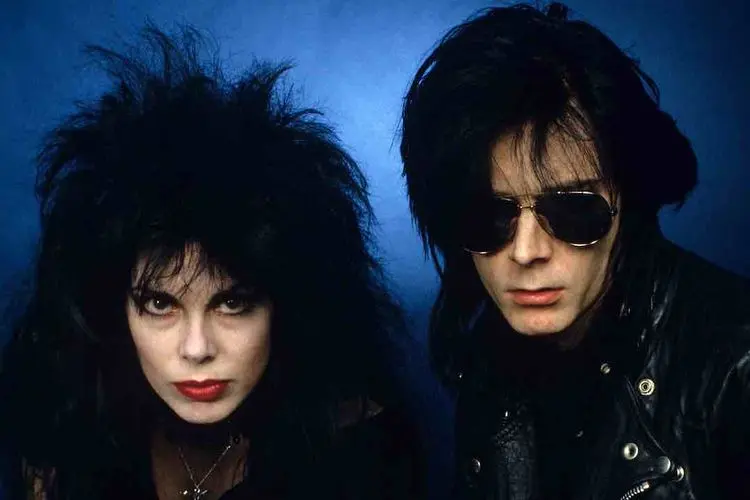
The sound of the goth subculture was shaped by a mix of foundational bands and influential artists whose styles pushed music into darker, more atmospheric directions:
- Bauhaus – Often credited as the first true gothic rock band, with their iconic track Bela Lugosi’s Dead.
- The Cure – Masters of blending melancholy with accessibility, defining much of the goth aesthetic.
- Siouxsie and the Banshees – Post-punk innovators who laid down the framework for goth’s haunting sound.
- The Sisters of Mercy – A cornerstone of classic goth, with deep vocals and driving rhythms.
- Joy Division – Their dark, introspective post-punk sound became the emotional blueprint for goth music.
- Christian Death – Pioneers of the American deathrock movement, fusing punk and gothic themes.
- Depeche Mode – Electronic pioneers whose moody, synth-driven tracks influenced darkwave and industrial goth.
- Echo & the Bunnymen – Brought atmospheric depth to post-punk, resonating with early goth audiences.
- Swans – Experimental and industrial-leaning, known for their intense and haunting soundscapes.
Influential Inspirations:
- David Bowie – His theatrical style and dark glam era heavily influenced goth fashion and performance.
- The Velvet Underground – Pioneers of art rock whose raw, shadowy sound inspired the darker edge of punk and goth.
- Kate Bush – Her ethereal, haunting vocals and experimental approach inspired later gothic and ethereal wave acts.
Goth Fashion: Clothing, Aesthetics, and Trends
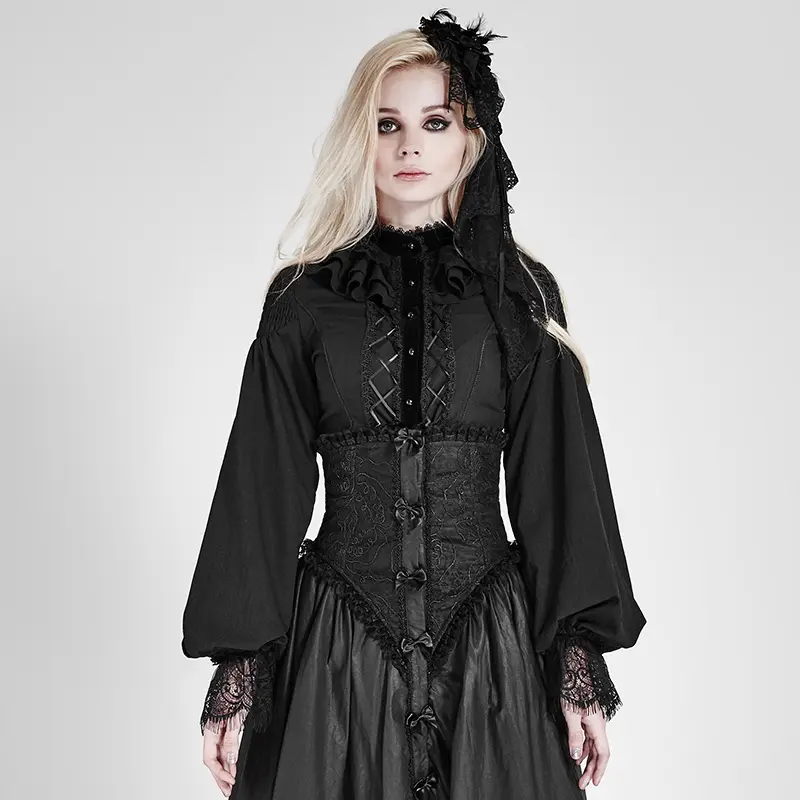
When people think of the goth subculture, the first image is often the goth fashion. Dark palettes dominate—black clothing, lace, velvet, leather, and fishnets form the core elements of the gothic aesthetic. These materials symbolize mystery and rebellion, creating a timeless style that’s both dramatic and deeply personal.
Over the years, many substyles have emerged. Traditional goth channels the moody looks of the 1980s with band tees and combat boots. Romantic goth embraces flowing lace and corsets, while Victorian goth takes inspiration from 19th-century mourning attire. In contrast, cyber goth mixes neon colors with industrial gear, and pastel goth blends soft hues with spooky motifs. There’s also the medieval goth, which draws from historical costumes, and the casual/modern goth, designed for everyday wear.
In the USA, many goths mix high fashion with thrift store finds. Popular goth fashion brands like Killstar, Tripp NYC, and Demonia sit alongside second-hand treasures that keep the look authentic and affordable. This blend of luxury and thrift culture makes the style accessible to all.
Beyond clothing, makeup, hairstyles, and accessories act as identity markers. Dramatic eyeliner, black lipstick, chokers, spiked jewelry, and dyed hair help goths craft an image that reflects individuality and non-conformity. Every choice is deliberate, transforming appearance into a canvas for self-expression.
Substyles of Goth Fashion
- Traditional Goth – Rooted in the 1980s goth scene, featuring band shirts, fishnets, black trench coats, and combat boots.
- Romantic Goth – Flowing lace, corsets, velvet fabrics, and a love for darkly poetic and dreamy gothic aesthetic.
- Victorian Goth – Inspired by 19th-century mourning fashion, with parasols, long skirts, and elegant tailoring.
- Cyber Goth – Combines neon colors, gas masks, goggles, and industrial fashion tied to electronic music culture.
- Pastel Goth – A playful twist mixing pastel colors with occult symbols, spooky motifs, and soft-meets-dark goth style.
- Medieval Goth – Draws from historical fashion and fantasy aesthetics, with capes, gowns, and armor-inspired accessories.
- Casual/Modern Goth – Simplified for everyday goth wear, blending dark jeans, black boots, and minimalist goth accessories.
Types of Goths: Subcultures Within the Subculture
The goth subculture isn’t a single uniform look—it’s a spectrum of goth archetypes shaped by both music taste and fashion styles. Some identify with deathrock goths who favor punk-influenced sounds and ripped clothing, while others embrace the elegance of romantic goths with lace and flowing fabrics. Then there are cyber goths, known for neon accents and industrial beats, and casual goths, who adapt the gothic aesthetic for daily life.
In the USA, regional scenes gave rise to unique flavors. California deathrock kept the raw, gritty edge alive, while NYC club goths blended dark fashion with nightlife culture, thriving in underground clubs and electronic venues. These American goth scenes highlight how location shapes identity.
It’s also important to distinguish goth from other alternative groups. Unlike emo, which leans toward emotional punk themes, or punk, which thrives on political rebellion, goth is defined by dark romanticism, atmospheric music, and artistry. Metalheads, while sharing a love for black clothing, are rooted in heavy riffs and aggression rather than melancholy and introspection. Understanding these contrasts helps reveal the unique depth of goth culture.
Goth Lifestyle: Beyond Music and Fashion
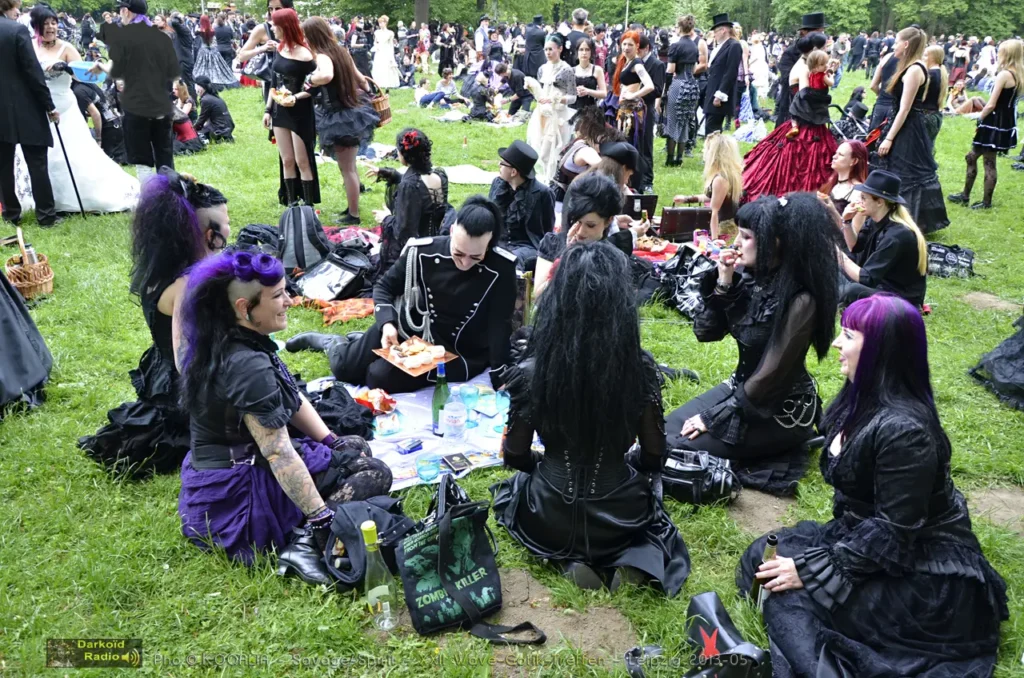
Goth festivals provide opportunities for community gathering and cultural celebration. Events like Wave-Gotik-Treffen in Germany attract thousands of participants who share music, fashion, and philosophical discussions. These gatherings demonstrate how goth subculture creates supportive networks extending beyond individual cities or countries.
Creative expression remains fundamental to gothic lifestyle. Many community members pursue writing, visual arts, or music production as outlets for exploring macabre themes and personal experiences. This artistic focus helps maintain cultural movement vitality by continuously generating new content and perspectives.
Misconceptions About Goth Culture
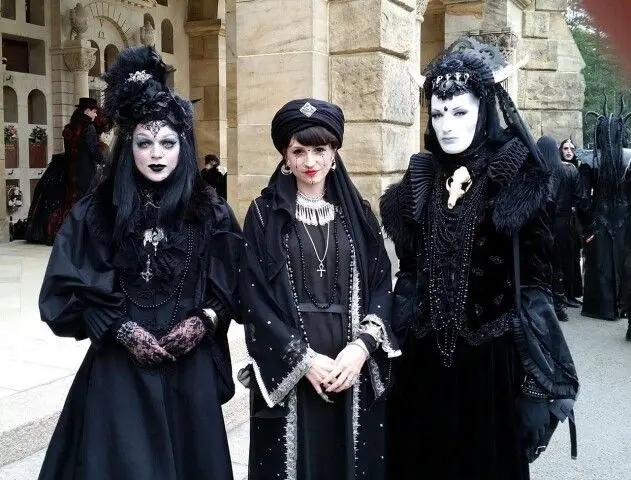
Media stereotypes often portray goths as depressed or dangerous individuals obsessed with death. Reality contradicts these misconceptions completely. Goth community members typically demonstrate higher than average creativity, intelligence, and emotional awareness. They process difficult emotions constructively rather than suppressing them unhealthily.
Religious concerns also create misunderstandings about goth culture. While some members explore occult or neopagan practices, many maintain traditional faiths or secular worldviews. Gothic aesthetic appreciation doesn’t require specific religious beliefs or rejection of mainstream spirituality.
Violence associations represent another harmful stereotype contradicting actual goth lifestyle values. Peace, acceptance, and artistic expression characterize authentic goth culture. Community members typically show greater tolerance for diversity and individual differences compared to general population attitudes.
How to Become a Goth (Beginner’s Guide)
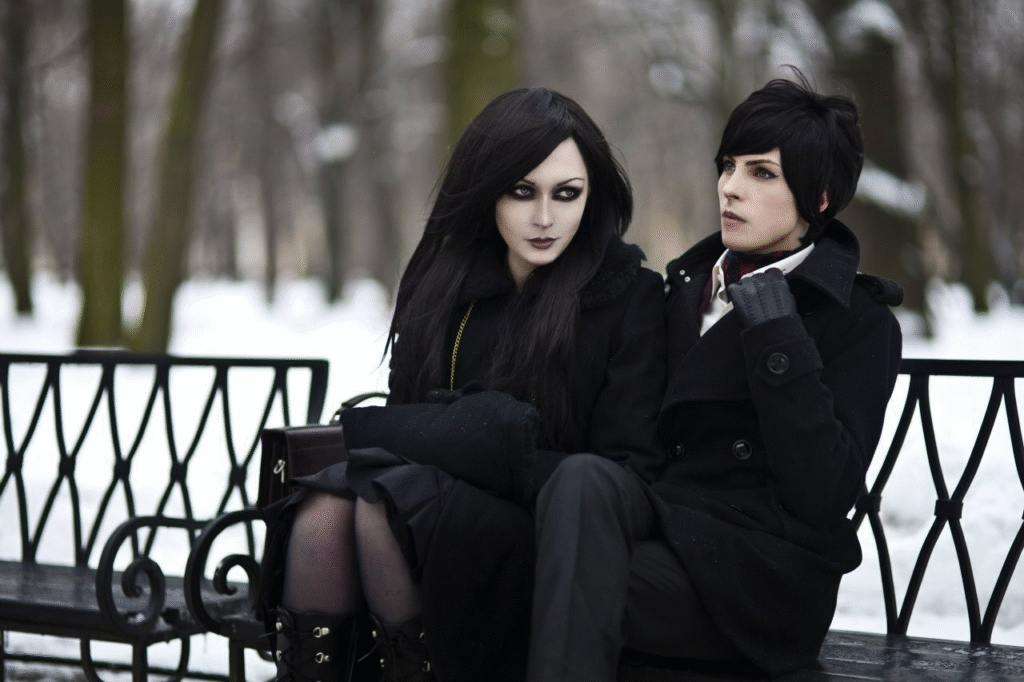
Becoming part of the goth subculture doesn’t require a fortune—it’s about passion, creativity, and authenticity. Anyone can start their journey with a few simple steps.
Step 1: Explore Affordable Goth Fashion Styles – You don’t need designer labels to achieve the goth aesthetic. Thrift shops, DIY clothing hacks, and affordable goth fashion brands offer plenty of options. Focus on staples like black boots, lace tops, and second-hand jackets to build your look.
Step 2: Experiment with Makeup and Aesthetics – Dark eyeliner, black lipstick, and pale foundation are classic goth makeup essentials. Pair them with expressive hairstyles or bold accessories to shape your identity within the scene.
Step 3: Connect with Goth Communities Online and Locally – Join goth forums, TikTok groups, and Facebook communities, or visit local clubs and festivals. Engaging with others helps you learn, grow, and find belonging in the goth community.
The most important lesson? Goth culture is about individuality, not wealth. Whether through music, fashion, or self-expression, anyone can embrace the goth lifestyle without breaking the bank.
How to Do Goth Makeup (Beginner-Friendly Guide)
1. Base Look (For All Genders)
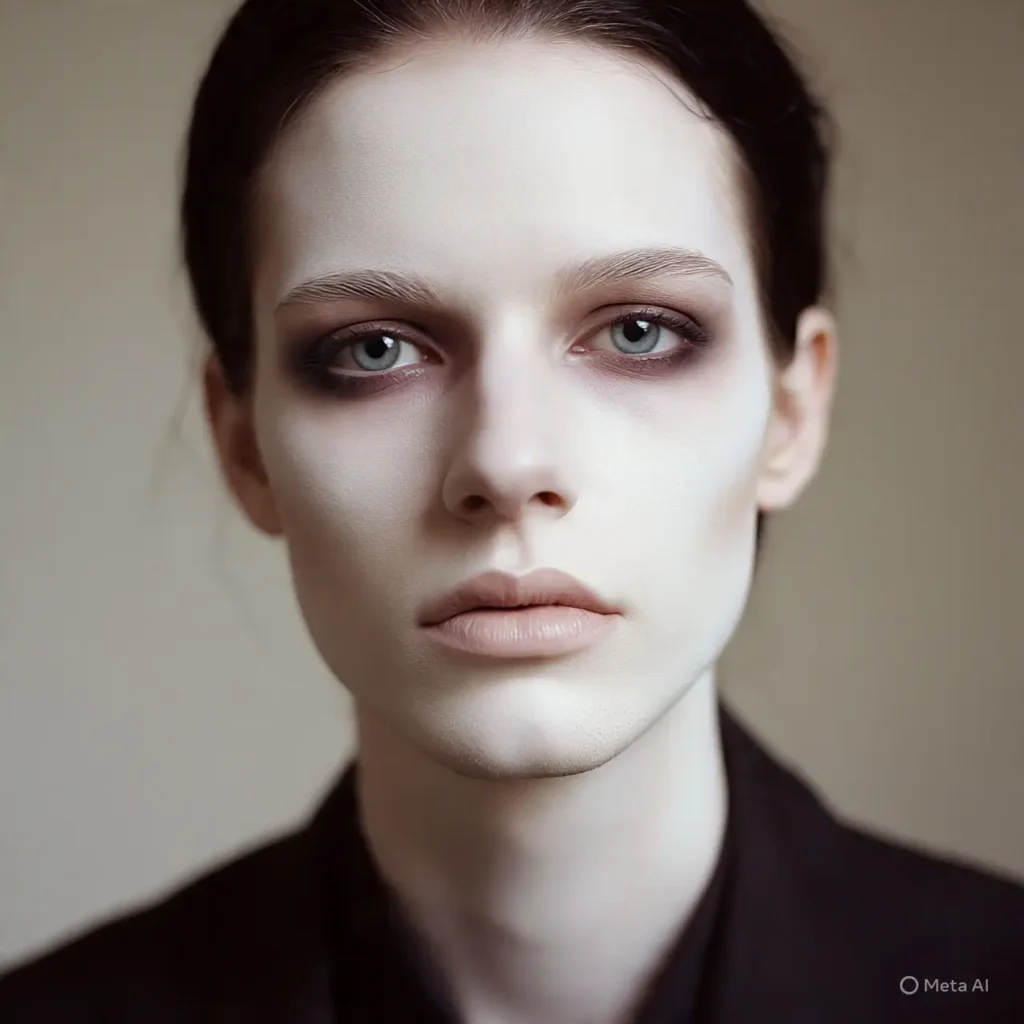
To achieve a true goth aesthetic, start with a flawless pale foundation or matte base. Even skin tone is essential to create that dramatic contrast against dark eyes and lips. Always lock the look with a setting powder so your gothic makeup lasts through late-night concerts or underground club events.
2. Goth Makeup for Girls
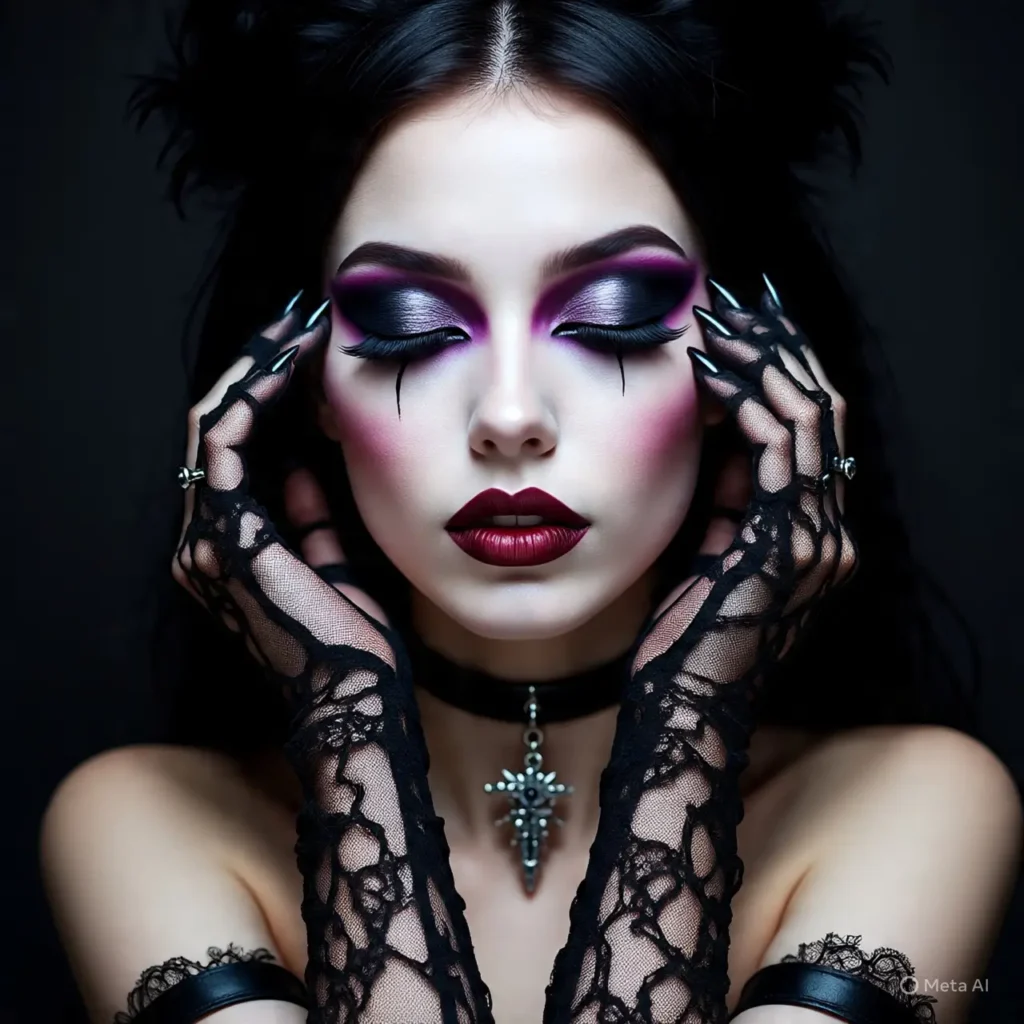
- Eyes: Go bold with black eyeliner, dramatic smokey eyeshadow, or jewel tones like deep purple and crimson red. Pair with false lashes or heavy mascara for a sultry, vampiric effect.
- Lips: Classic black lipstick, dark red, or plum shades are timeless staples in the gothic beauty scene.
- Extras: Add shimmer with silver highlighter, then complete the look with chokers, lace gloves, or gothic jewelry to enhance the feminine side of the subculture.
3. Goth Makeup for Guys
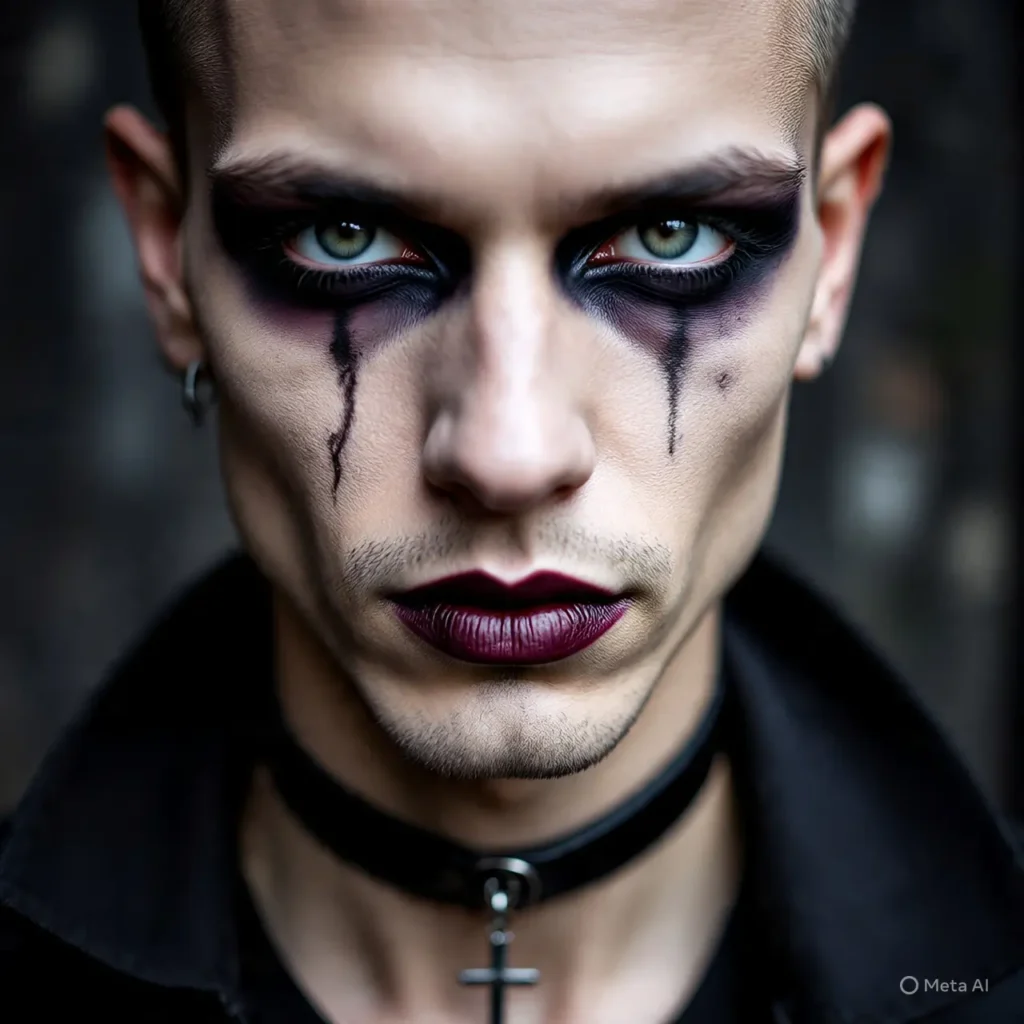
- Eyes: Smudged kohl eyeliner and subtle dark eyeshadow create an effortlessly mysterious vibe.
- Lips: Optional — but matte burgundy or black lipstick can be used for extra edge.
- Extras: A pale complexion with sharp contouring, combined with piercings or gothic accessories, channels classic male goth icons like Peter Murphy or Robert Smith.
4. Tips for Beginners
- Begin with minimal goth makeup and slowly experiment with darker shades as you grow more confident.
- Explore affordable goth-friendly makeup brands available in the USA such as NYX, e.l.f., Wet n Wild, and Black Moon Cosmetics. These budget-friendly products make it easy for anyone to dive into the goth scene without overspending.
Goth Home Décor: Dark Aesthetics for Your Living Space
Gothic home décor transforms living spaces into personal sanctuaries reflecting dark aesthetic preferences. Collectors often focus on antique furniture, ornate mirrors, and artwork featuring gothic symbolism. Candles, religious imagery, and natural elements like dried flowers create atmospheric environments supporting contemplative mood.
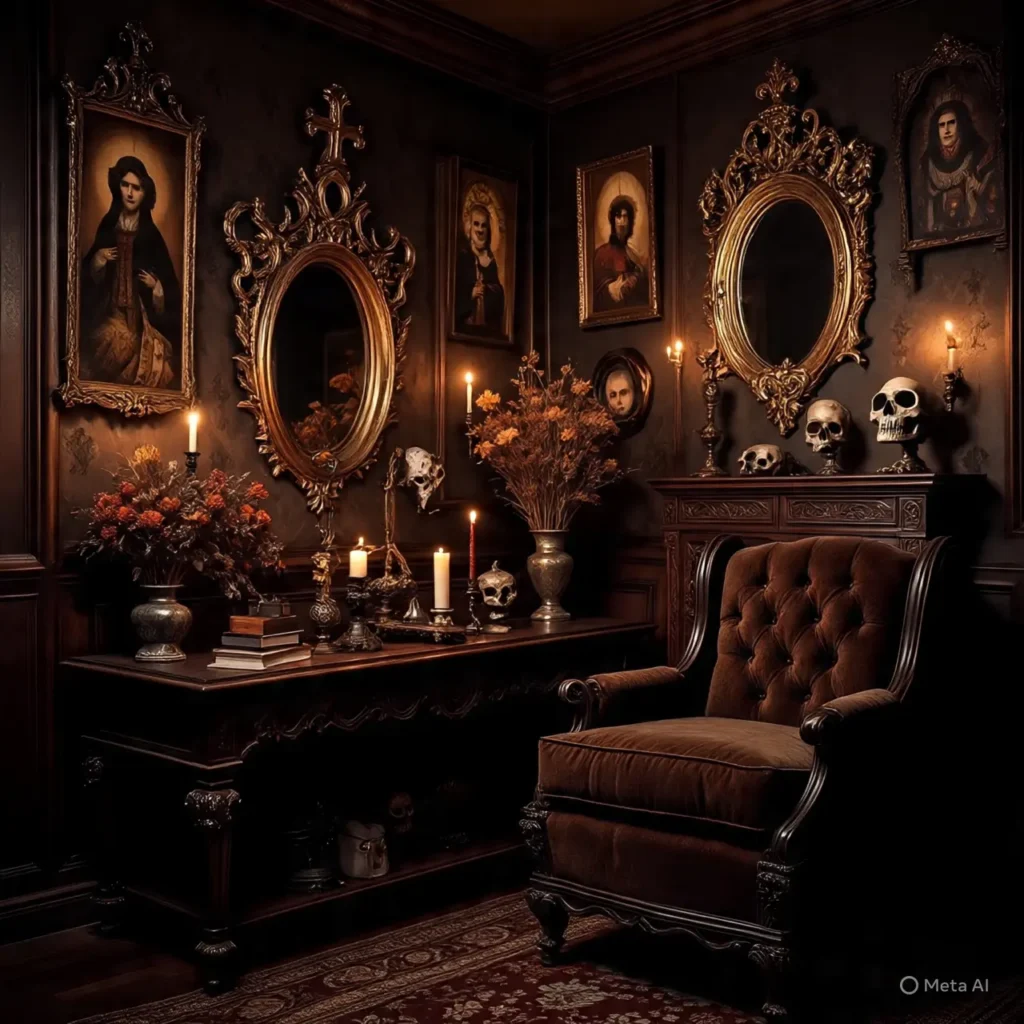
The goth subculture doesn’t stop at fashion and music—it extends into the home through distinctive gothic décor that reflects themes of mystery, darkness, and romanticism. Transforming your living space with macabre aesthetics allows you to create an atmosphere that feels both artistic and otherworldly.Here are key elements to bring the macabre aesthetic into your living space:
- Edward Gorey illustrations – Hauntingly whimsical artwork perfect for goth wall art and prints.
- Cursed-looking amulets, antlers, and bones – Symbolic decorations that add a mystical, natural, and occult-inspired atmosphere.
- Creepy antique mirrors – Ideal for creating eerie reflections and enhancing gothic interior design.
- Victorian-style furniture – Dark wood, velvet, and ornate details that embody classic gothic elegance.
- Horror movie posters – Mixing modern pop culture with the timeless goth aesthetic of the uncanny.
- Medieval memento mori art – Reminders of mortality that highlight dark romanticism and gothic symbolism.
- Danse macabre pieces – Artistic celebrations of death and mystery that enrich goth décor.
- Anatomical drawings and models – A blend of science, art, and gothic history, perfect for collectors.
By combining these elements, gothic interior design turns any house into a sanctuary of dark beauty, individuality, and creativity—proving that the goth lifestyle is as much about living space as personal style.
Gothic Literature, Art, and Pop Culture
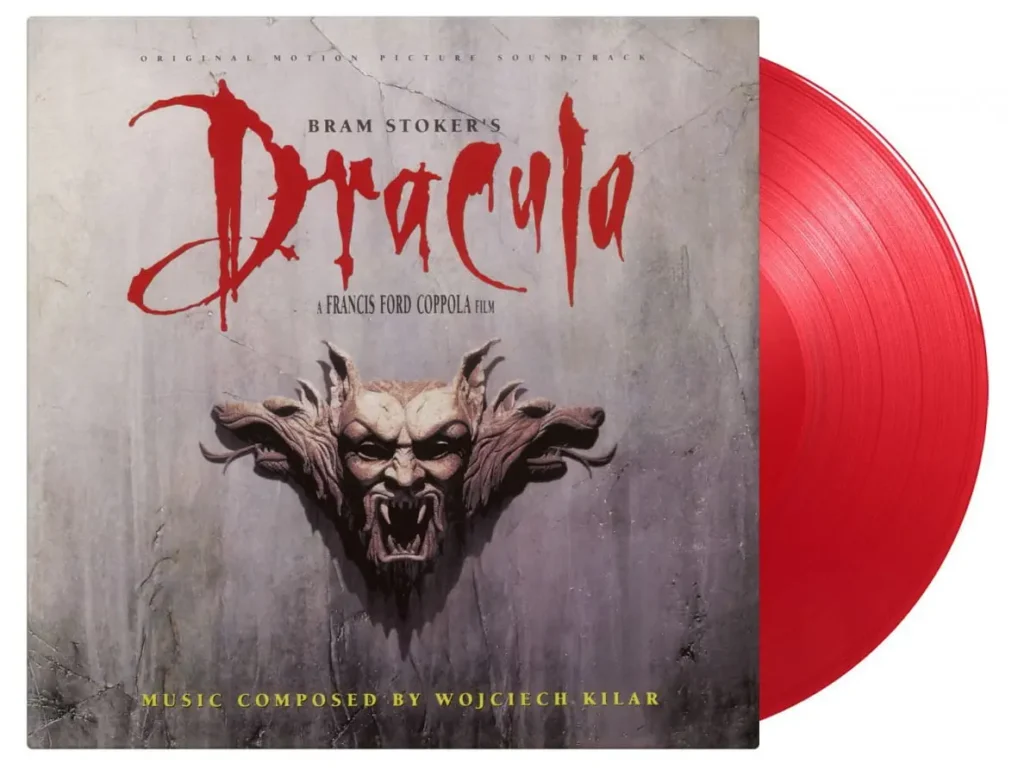
Edgar Allan Poe laid literary foundations that continue inspiring goth culture today. His exploration of death, loss, and psychological horror resonates with those drawn to dark themes. Mary Shelley‘s “Frankenstein” and Bram Stoker‘s “Dracula” established vampire mythology that remains central to gothic fiction.
Tim Burton‘s films brought gothic aesthetic into mainstream consciousness while maintaining authentic dark romanticism. Movies like “The Crow” became cultural touchstones, influencing both fashion and philosophy within goth subculture. Anne Rice‘s vampire novels created literary frameworks that many goths embrace as lifestyle inspiration.
Modern horror movies and gothic video games continue this tradition, providing new mythologies for contemporary audiences. These media forms help goth culture remain relevant by incorporating current technology while preserving timeless themes of beauty in darkness and romantic melancholy.
Goth Books and Authors: Literature That Inspires the Subculture
The goth subculture has always been shaped by powerful works of dark literature, from classic gothic novels to modern horror and dark fantasy. Here are some of the most influential goth authors and books:
- Franz Kafka – Themes of alienation and existential dread.
- Fyodor Dostoevsky – Psychological depth and human suffering.
- John Keats – Romantic poetry that finds beauty in sorrow.
- Emily Brontë – Wuthering Heights, a masterpiece of passion and tragedy.
- Emily Dickinson – Poems exploring death, grief, and the supernatural.
- Shirley Jackson – American gothic and psychological terror (The Haunting of Hill House).
- Clive Barker – Horror and dark fantasy with vivid, gothic imagery.
- Neil Gaiman – Blending gothic sensibilities with modern fantasy (The Sandman).
- Octavia Butler – Speculative fiction with gothic undertones.
- Tananarive Due – African American gothic and supernatural storytelling.
- Ray Bradbury – Dark sci-fi and eerie tales (Something Wicked This Way Comes).
- J.G. Ballard – Dystopian and unsettling landscapes.
- Frank Herbert’s Dune – Epic sci-fi with gothic themes of power and destiny.
- J.R.R. Tolkien – Myth, shadow, and moral complexity in fantasy.
- Ursula K. Le Guin – Dark myth-making and philosophical fantasy.
- E.T.A. Hoffmann – Blurring reality and nightmare in early gothic tales.
- Horace Walpole’s The Castle of Otranto – The first true gothic novel.
- Matthew Lewis’s The Monk – Forbidden desires and supernatural horror.
These writers shaped the goth aesthetic and continue to inspire the goth lifestyle, proving that literature is as central to the subculture as goth music or goth fashion.
The Future of the Goth Subculture
The goth subculture has never remained static—it continues to evolve with every generation. In the digital era, TikTok goths and Instagram goth aesthetics are transforming how the movement is expressed and discovered. Social media allows global fans to share goth makeup tutorials, outfit inspirations, and goth music playlists, keeping the culture alive far beyond traditional clubs and underground venues.
A major shift is the rise of sustainable goth fashion in the USA. With increasing awareness of climate change and ethical shopping, many goths embrace DIY clothing, thrift culture, and eco-friendly goth brands. This modern twist reflects the community’s long-standing non-conformist values while addressing environmental concerns.
Younger generations are reinventing the movement by blending it with alternative fashion trends such as pastel goth, casual goth, and cyber goth, while still honoring the legacy of traditional goth and romantic goth. Through platforms like TikTok and Instagram, these goth substyles not only coexist but also merge, creating innovative hybrids that reflect today’s identity-driven culture.
Looking ahead, goth will remain culturally relevant because it embodies timeless themes—dark romanticism, melancholy beauty, self-expression, and the search for authenticity. As long as individuals seek meaning beyond mainstream culture, the goth subculture will adapt, thrive, and continue shaping music, art, and fashion worldwide.
Conclusion
Goth subculture represents much more than fashion trends or musical preferences. It embodies philosophical approach to life that finds beauty in darkness and celebrates individual expression over conformity. Whether you’re drawn to romantic melancholy, gothic literature, or simply appreciate dark aesthetic, this cultural movement offers community and creative inspiration.
Understanding goth culture requires looking beyond stereotypes to discover rich traditions spanning literature, music, fashion, and philosophy. From Edgar Allan Poe to modern darkwave artists, from Victorian fashion to contemporary cyber goth innovations, this subculture continuously evolves while honoring its foundational values. Embrace your own journey into the darkness within and discover what gothic lifestyle might offer your personal growth and creative expression.
FAQs About the Goth Subculture
Q1. What defines goth culture?
Goth culture is defined by its dark aesthetic, goth music, and emphasis on individuality, self-expression, and appreciation for dark romanticism.
Q2. What did the Goths believe in?
The historical Gothic tribes were different from the modern subculture. Today’s goths don’t follow a single belief system—they often value creativity, authenticity, and non-conformist thinking.
Q3. What makes a person gothic?
Someone is considered goth when they embrace gothic fashion, music genres like post-punk and darkwave, and the philosophy of finding beauty in darkness.
Q4. What do goths do for fun?
Goths enjoy concerts, club nights, reading gothic literature, thrift shopping, exploring goth makeup looks, and engaging in online communities.
Q5. What do goths eat?
There’s no official “goth diet.” Many goths simply add a dark aesthetic twist to meals—such as black coffee, themed desserts, or Halloween-inspired foods.
Q6. Can goths be Christians?
Yes. Goth is a subculture, not a religion. Many goths are Christian, while others may follow paganism, atheism, or other belief systems.
Q7. What makes someone goth?
It’s about mindset and lifestyle more than appearance. A person becomes goth by embracing gothic art, fashion, music, and philosophy.
Q8. Can you be goth without wearing black?
Yes. While black clothing is iconic, styles like pastel goth and casual goth show that it’s possible to express the aesthetic in different colors.
Q9. What’s the difference between goth and emo?
Goth is rooted in post-punk and gothic rock, while emo comes from emotional hardcore punk. Goth emphasizes dark romanticism, while emo focuses on emotional intensity.
Q10. Is goth just a phase?
For some, it’s temporary, but for many, goth is a lifelong identity tied to music, art, and personal expression.
Q11. Is goth linked to religion or politics?
No. The goth subculture is apolitical and non-religious. Individual goths may hold personal beliefs, but the movement itself is focused on art, music, and lifestyle.
Goth continues to thrive because it bends, shifts, and evolves with every generation. There are no strict rules—only the freedom to express your dark aesthetic in whatever way feels true to you. May this guide to the goth subculture inspire you to step boldly into the shadows, embrace your individuality, and celebrate the beauty of the strange. Stay mysterious!
If you’re interested in Medieval Goth Aesthetic Journey, be sure to check out our How to Start Your Medieval Goth Aesthetic Journey (For Baby Bats & Beginners) to explore more unique and dark options!

